Once upon a time, there was a man who would buy old Ford Pops for a fiver, add nothing but petrol and then, when the car expired, leave it by the side of the road. The next day he’d buy another. This was one of my favourite bedtime stories my dad would tell me.
I also heard tales of the 1930s Humber Super Snipe Uncle Charlie bought for £15. It was a family carrier for a few years before being broken up (its headlights and bonnet mascot ended up in our cellar). Consequently, marginal motoring has always fascinated me.
The truth is that the biggest motoring expense is depreciation. I saw this first-hand when flogging new cars. What sticks in the mind is a nearly new Volkswagen Santana that was worth almost nothing in part-exchange against a new BMW 3 Series.
Indeed, according to the sales training materials, my part-exchange nightmare was going to be a Saab owner with an over-inflated sense of his 900’s worth.
Then in the late 1980s I went to India, where I saw people who managed to keep Hindustan Ambassadors running against all odds. They still do. I thought that what they were doing wasn’t just running an old car on a shoestring; it was Bangernomics.
Back in Blighty, I didn’t have a car for a couple of days, which made getting to a Gloria Estefan concert a logistical nightmare. When I added up the cost of taxis, buses and trains, I reckoned that buying a banger would have been cheaper. So I did. It was awful.
Back then, used cars that were 10 years old or more were usually rusty old bits of rubbish, unless they were a Mercedes W123 or a Volvo Amazon.
Everything else was Italian and French Eurotrash, or BL’s MOT-borderline finest. So I went behind the Iron Curtain and picked up a Polski Fiat 125p for £80. I must have been mad. The offside indicators were held in with Band Aids.
But owning it made a good story. In 1989 a feature entitled ‘Better than Walking’ appeared in Steve Cropley’s brilliant magazine Buying Cars, and the word ‘Bangernomics’ appeared in print for the first time. A book followed shortly after.
Bangernomics as a principle still works, but what really worries me is that car manufacturers aren’t making bangers any more. Cars are getting more complicated and less bodge-friendly. That turns my fairytale of Bangernomics into a horror story that keeps me awake at night. But until you tell me otherwise, I refuse to believe that the banger is dead.
My Bangernomics best-buys
1990 Mazda MX-5, price now £500
This is the hippest and most happening sports banger that, incredibly, is still affordable. The Mazda MX-5 is rear-wheel drive and has just enough - but not too much - power, plus it has all the classic 1960s sports car ingredients of simplicity, style and value, brilliantly combined with modern car reliability. It’s a doddle to live with, too, plus it has a real boot and a hood that works.
Choosing between a standard UK model or a specification-heavy import is always going to be a matter of personal preference. A non-contact engine means that even neglected ones survive. Rust, though, is becoming more of an issue. So it is just like buying a 1960s sports car, then. Hurry and pick one up for real-world money while you can, before the ‘classic’ thing happens and prices rise.

1991 Saab 900, price now £395
According to the purists, the 9000 may never have been a proper Saab. That’s mainly because it isn’t wilfully ugly and deliberately ignition-in-the-floorpan idiosyncratic. It is, however, pleasant to drive, with a decent ride, solid build and - if it goes wrong - executive expense account running costs. Actually, they’re not that bad.
They often need replacement brakes and exhausts, while early 1990s automatics can self-destruct and that turbo really does need a full service history. If the climate control doesn’t work, disconnect it and fry, or find someone who really knows what they’re doing and swallow a big repair bill. The 2.0 Ecopower Turbo
is great, the 2.3 quite quick and the V6 rare. Execubarges have never looked more pointy.
1992 Volkswagen Golf GTI, price now £2000
I know the marginal Mk3 model came in here, but in 1992 you could still bag a magnificent run-out Mk2. But which one? Whether it’s a proper GTI, a 1.6 or an old-fashioned diesel, these cars still look great and refuse to cost more than buttons to run.
There are fewer immaculate GTIs these days as they start to go classic car-price crazy, but you still get plenty of GLs knocking around the country as a testament to their longevity.
There isn’t a lot to go wrong, although with high mileages you get bore wear, which leads to a smokey engine. Otherwise it’s shock absorbers, exhausts and other sundries that may need replacing. Rust gets the tailgate, doors, wings and sills, so keep an eye out for that.
1993 Honda Prelude, price now £700
Your head says NSX, but the reality and your budget suggests that an old Honda Prelude would be the next best thing. In the context of a driving machine, the electronic four-wheel steering system actually works extremely well. Cornering is never less than flat and secure, with seemingly endless amounts of grip.
The best engine is Honda’s relatively small 2.2-litre petrol lump with VTEC technology. The variable valves scream and slingshot the coupé forward at a tremendous pace, so with power aplenty it delivers a 0-60mph time of just over seven seconds and a top speed of 140mph. Brakes, exhaust and clutches are going to be the big-ticket items. Best of all, though, it’s a Honda, so it will be mechanically incorruptible. There will, however, be rust.
1994 Mercedes-Benz E-Class Estate, price now £500
The original E-Class from the 1980s and into the 1990s is nothing short of a new and used car legend. For build quality, reliability and understated style it is unmatched. Go for post-1993 models with the facelifted body and the perky 16-valve engines. Passenger airbags came a year later.
The timing chains will eventually rattle on a W124, but by then the mileage will be epic. There will be big bills, though, if the self-levelling rear suspension doesn’t. Any rust is going to be mildly cosmetic, with bubbling around the front wings and wheel arches. Ratty ones are bought by surf dudes, the smart ones by old money and cool hedge-funders who understand how over the top an AMG G-Wagen is.
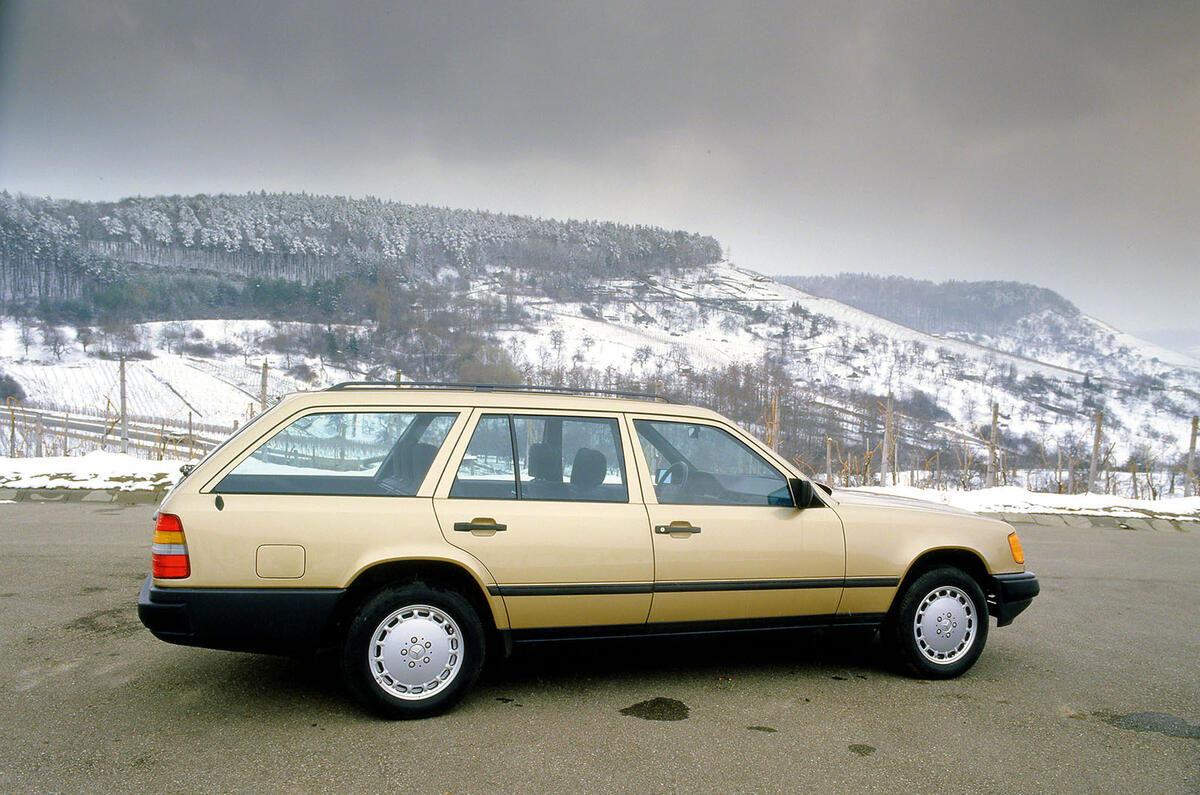
1995 Vauxhall Omega, price now £350
Although big, rear-wheel-drive saloons can be bought with all sorts of posh badges, we think the traffic cops had it right in their white Vauxhall Senators and Omegas adorned with the blues and twos. The Omega is a big old barge that’s very forgiving, always feels safe and is, in top trim at least, very comfortable. The estate is massively practical and, well, just massive, really.
It’s a working man’s class Mercedes E-Class, which explains why some are now getting a bit shabby and neglected. Tyres, suspension, brakes and now rust are the issues most likely to cause MOT failure, so get the old girl checked over thoroughly before committing to buy. The full-house Senators with the cheese-cutter grille and a 3.0-litre V6 are the coolest of the cool.

1996 Nissan 200SX, price now £2995
Before the Fast and Furious franchise there was this, the Nissan 200SX. It’s the real, tail-out, hooligan deal - unless you find the comfy, recently retired Touring spec. Performance is always impressive, as the 2.0-litre turbocharged 16-valve engine takes the SX to 60mph in justover six seconds and on to a top speed of around 145mph.
Not only that but the power could also be harnessed by skilful drivers into a controlled tail-sliding manoeuvre (aka ‘drifting’). Look out for a cracked exhaust manifold, obvious either by noise or a visual inspection. The only real engine sound that stands out is that of the injectors ticking away. The car should start first time in all weathers and idle at 1200rpm from cold and at 850-900rpm when warm.
1997 Lexus GS300, price now £750
The obvious Lexibarge may be the LS400, but really it’s the GS that offers the best value. There’s lots of standard equipment, sky-high build quality and brilliant engines. It can be expensive to own, though, and doesn’t feel or look special enough against something like a BMW 5 Series, but the GS easily beats one of those for kit, of course.
They’re getting on a bit now, yet the GS remains fabulous value for money and can be bought with a suitably high mileage without any worries. You just have to look at the consumables - brakes, suspension and all that - as these can be quite tired by now. ‘Blinged’ ones can be marginal and may never have been serviced by the previous owner.
1998 BMW E38 7 Series, price now £950
The E38 is the last of the old-school Sevens, with loads of buttons and that familiar overgrown 3 Series shape. It set standards that other luxury cars are only just getting to grips with now. It’s better built than a Mercedes S-Class, more lithe than a Jaguar XJ and more characterful than an Audi A8.
Twenty years on, the electrics shouldn’t work, but they still do. The 3.0, 4.0 and 4.4 V8s are great, but the old-school straight sixes are better, I think. Standard alloys and balloon tyres are far preferable to today’s low-profile nonsense. E38s need a service history, but buying one is a blend of common sense and a large dose of luck. If you can hook it up to the diagnostics machine, the fault codes might give you a heart attack.
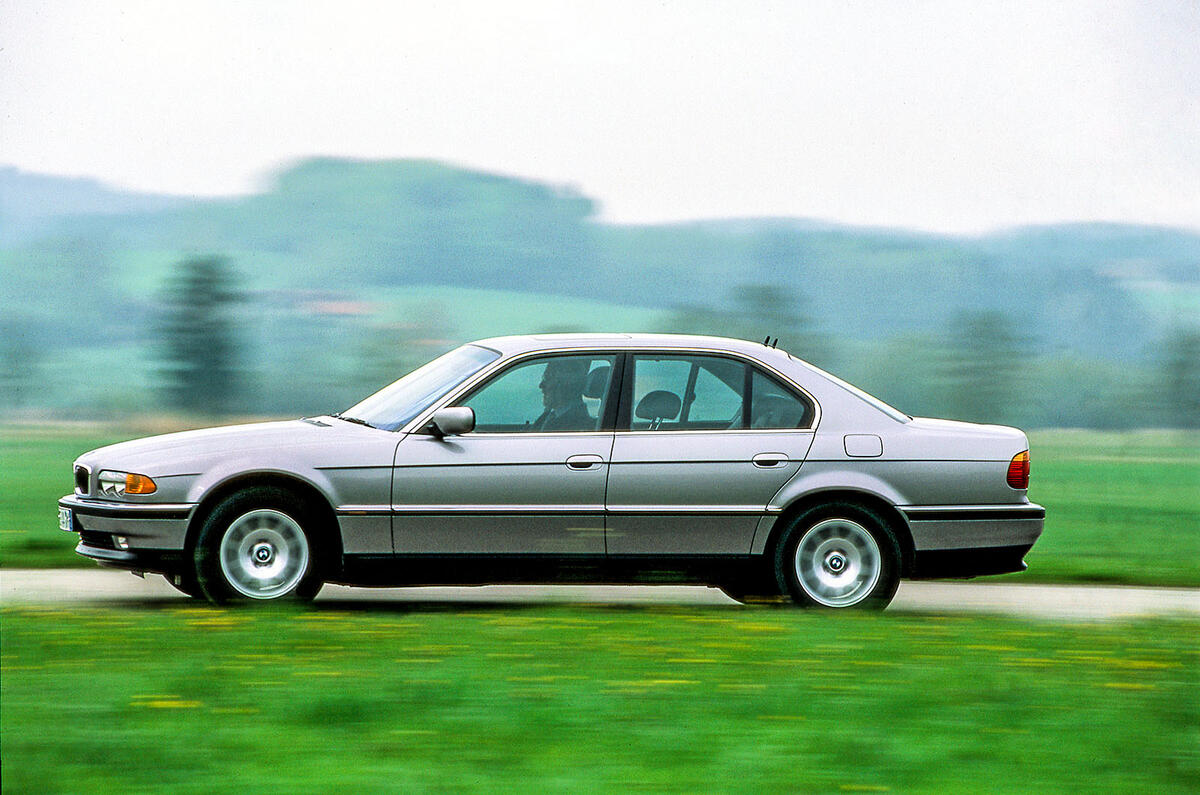
1999 Peugeot 406 Estate, price now £395
Here’s the last time that a French car was any good, in Bangernomic terms anyway, because it’s relatively straightforward. The 406 had it all: smooth ride, bags of space and great diesel engines. The 2.0-litre petrol engine is refined and powerful too, while the frugal HDi 110 LX is the pick of the bunch for a workhorse estate.
The 406 Estate has neat handling and feels suitably sporty. A facelift in mid-1999 improved equipment levels across the range. They are fairly unbreakable in the engine department, but the suspension, brakes and cooling system may need attention. Timing belts need to be changed after five years or 60,000 miles. Electrics aren’t that reliable, so check that the air-con, power windows and just about everything else works. Styling still looks neat.
2000 Lexus IS200, price now £650
This was the Japanese take on the 3 Series, and very good it was, too: great styling, sporty performance, excellent engines and very high levels of fit and finish. It wasn’t as refined or practical as it could have been, though, and the interior was controversial - although the ‘sports watch’ dials are at least interesting.
Despite the smallish boot, it’s the standard equipment list that persuades many that the IS200 is the compact executive car for them. There isn’t much to worry about, although early cars had alloys that corroded all too easily and sometimes there was a spot of clutch judder. These days the IS200 is a more reliable E46 BMW 3 Series for the 20-something with attitude to use on the commute. In short, they’re brilliant.
2001 BMW E39 5 Series, price now £500
Here’s your final chance to buy what a mechanic told me is the last fixable BMW and arguably the best Bimmer ever: the E39 5 Series, which still looks handsome, is solidly built and handles superbly. There’s a huge choice of engines, from smooth straight sixes to some civilised diesels. Or, if you want to step up a gear, there are the V8s, which make a truly Bangernomic M5.
Diesels are vulnerable if the servicing has been skipped and expensive to fix when it comes to turbos, injectors and head gaskets. Suspension bushes and ball joints wear out; automatic gearboxes can fail if not serviced. There can be a lot of minor electrical issues, from instrument clusters to the heater control panel, but these tend to be annoying rather than fatal.

2002 Toyota MR2, price now £995
Pocket-sized funster sports cars seem to be an exception, so it was a huge relief to find a revived MR2, which right now costs very little to get into. The MR2 delivers great performance, superb handling and an easy-to-fold hood. What more do you want from a sports car? More space for luggage? Nah, not in this instance.
Surprisingly, Toyota’s roadster isn’t a noisy screamer; the MR2 is refined, frugal on fuel and simple fun. In many ways, it’s a Caterham for softies. Whether the roof is up or down, noise is never intrusive. It’s a pretty bulletproof little thing with a few recalls under its belt; the only major issue is that the exhaust can leak from the manifold. Find a few-owner, family-owned example for peace of mind.
2003 Ford Mondeo, price now £395
Do we go for sensible Volkswagen Passat, unburstable Toyota Avensis or flair-filled Ford Mondeo? Well, Mondeos are relatively cheap to fix, around in vast numbers and something of a hoot to drive. A V6 is a blue-collar stealth supercar, old 2.0 TDCis might be feeling their age and a 1.8 or 2.0-litre petrol is perfect for doing all the local chores and the occasional long run to see relatives.
There is loads of room inside and the estate is suitably ginormous. Bag an LX at least or a stuffed Ghia X. Electricals can play up, of course, as with any modern, and the suspension bits and bobs wear out and need replacing, but a fresh MOT should set you up for the year.
2004 Toyota Celica, price now £700
We’d been praying for another Ford Capri, and this was pretty much it. The Celica is what Bodie and Doyle would have driven in a rebooted The Professionals. With sharp styling, perky performance and spot-on handling, the Celica is a good-value sports car that’s great to drive and easy to own, with excellent engines and impressive equipment levels. In short, it’s a great coupé.
Treat it as a two-seater, enjoy the good level of standard kit and don’t worry too much about vocal engines and road noise, because that’s all part of the appeal. The handling is pure sports car, without too many electronic aids. There was a recall about fuel tanks, so check that’s been addressed. Otherwise, look for owner abuse, worn tyres and kerbed alloys.
2005 Toyota Land Cruiser, price now £7995
The Land Cruiser is the king of cockroaches. Trouble is, the values never bottom out; they just seem to stay solid, whatever the mileage. A petrol V8 is the closest you will find to a bargain, before you convert it to run on LPG.
The Land Cruiser legend not only delivers decent handling and a refined ride but also promises incredible reliability. The very worst you can say about a Land Cruiser is that the cabin is on the dull side. Otherwise, the world is full of Land Cruisers of all generations, and they refuse to break down.
There can be off-road-related damage to suspension, bodywork and the underside. Cracked cylinder heads on diesels is the big expense, so check the water level. A full service history is nice to see, and don’t worry if a farmer or intrepid explorer has owned it.
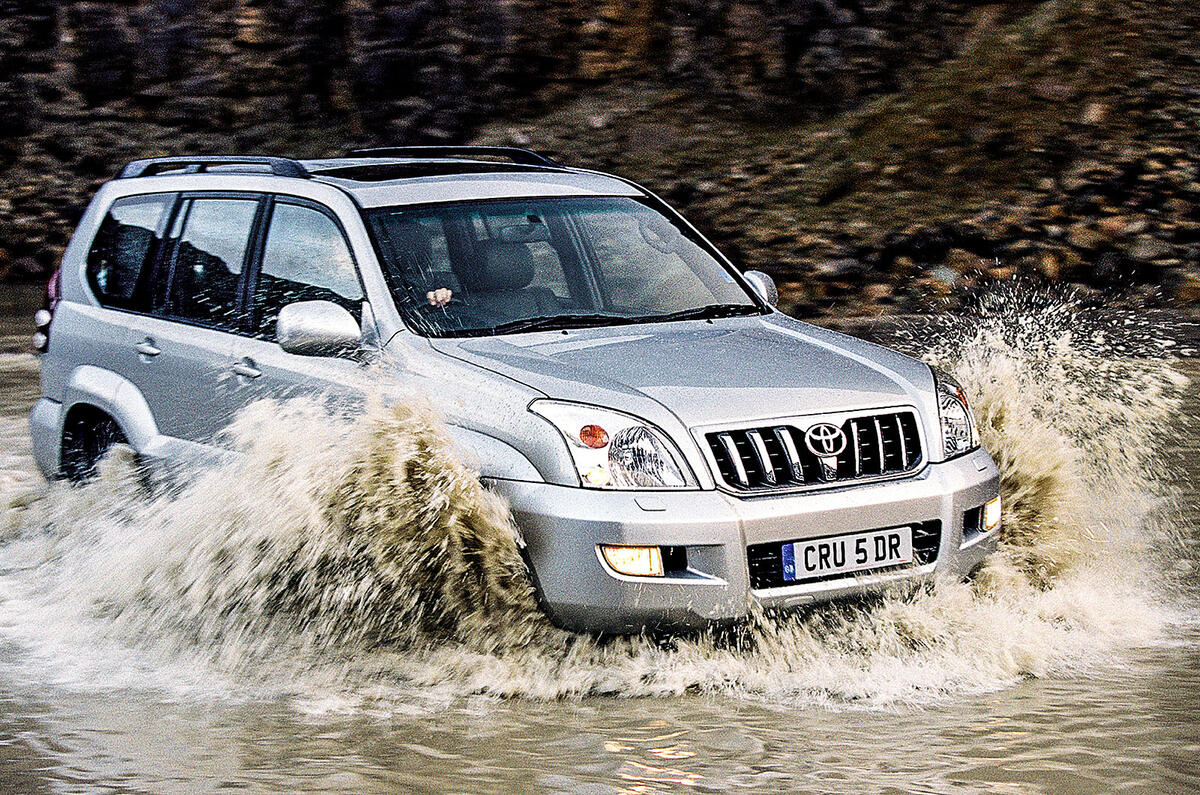
2006 Honda Civic Type R, price now £2500
For a moment we did consider a cat food-run 1.4 Civic, which is not a bad thing, but it would be rude not to spare a thought for the previous-generation Type R. It looks like a space pod that would blast off from the Starship Enterprise to land on a nearby planet.
And yes, the handling is out of this world and the Type R is everything that a hot hatch should be, although to say it’s on the firm side is an understatement, so don’t expect much in the way of ride comfort. As it’s a Honda there isn’t much to worry about in the bits falling off and failing department.
Look out for owner abuse and stupid drainpipe exhausts, but those things are easy enough to spot. Otherwise it’s brakes, tyres and bodywork damage to consider.
2007 Skoda Superb, price now £2200
Picking a Fabia would be too easy. However, the fact that the Czech company makes a credible execubarge is very significant. The Superb is unique, not least for the saloon looks combined with hatchback practicality. Soft suspension means comfort at the expense of handling, while the seats are big and the leg and head room are immense.
The V6 drinks fuel, but the pay-off is a generous spec and a low price. The private hire trade will target the diesels, but I’d stick to petrol, as the 2.0 will return over 33mpg and be civilised enough. Like any decent executive car, the Superb has been relatively faultless in service, with no major reliability issues. Even so, run a diagnostic check at a garage for peace of mind.
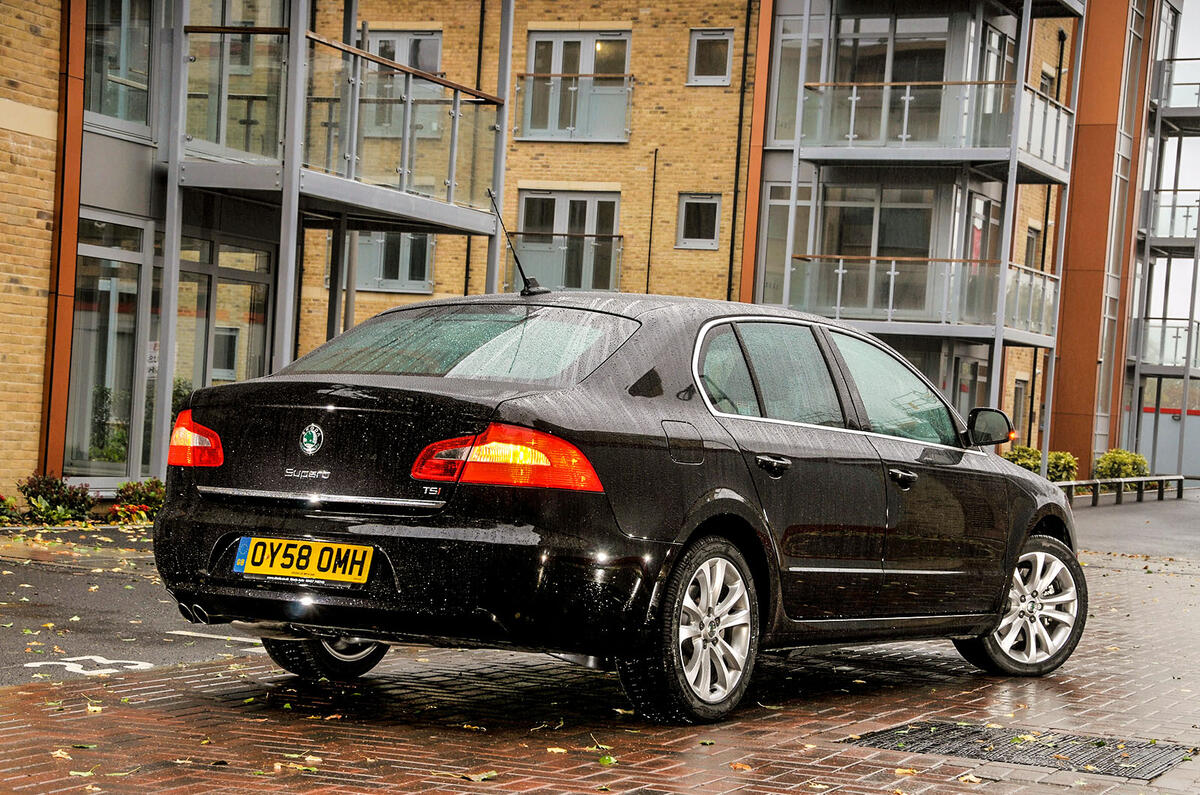
2008 Suzuki Swift, price now £2000
Pocket-sized warm hatchback that is both practical and reliable? More spacious than a Mini and better value? The Suzuki Swift has it all. The Sport is the one to go for if you’re keen on driving hard, and hopefully the original owner shelled out £40 on a set of stripes. Unlike many motors, the go-faster additions really suit the Swift.
There are more hardcore and more credible small cars out there, but one of these costs far less and, most important, it’s a Suzuki. That means no matter how much you abuse it, a Swift will refuse to explode. Even the GL models came with six airbags, but not air conditioning; you need to trade up to a GLX for that. The 1.3 diesel is popular, but petrol models are both cheaper and better.
2009 Honda Accord, price now £5000
From the late 2000s comes this sharply styled, well-built executive car, which remains underrated and undervalued today. It’s way cooler than an Avensis, too. Honda has always fitted brilliant engines, and the Accord’s was no exception. The petrol engines are sporty, the 2.0 being adequate while the 2.4 delivers brisk performance, especially because the manual gearbox is so slick and easy to use.
But the pick of the range is the 2.2 i-CTDi diesel, which is refined, frugal and quicker in terms of acceleration than the 2.0-litre petrol unit. The Tourer is really nice, too, and still looks like the groovy future.
There isn’t much to worry about, apart from some rust around the sunroof. Find one with a full service history, then, and it will last for ever.
2010 Lotus Evora, price now £29,995
Here’s a controversial and unexpected entry, and it may never come to pass as a genuine banger. However, take a look at 1970s Lotuses, which are now unfashionable, cheap and prone to breaking down.
If the same brand snobbery conditions prevail in 30 years’ time, the Evora could potentially cost buttons, while the dream combination of a Toyota V6 and a composite body should mean it will last for ever. It isn’t a common-as-muck 911, Cayman, M3 or RS5, and that’s why you should find a place for an Evora on your ‘must have’ list. Quality is creaky, perhaps, but they don’t seem to explode. It’s just the niggly stuff that needs looking at, so think water leaks, door handles, air-con systems and gear cable rattles.
2011 Saab 9-5, price now £7000
Saab’s swansong was actually far better than anyone could have expected and different enough from the Germans for those who want to stand out from the executive crowd. It still looks special now. Like the previous 9-5, it is absolutely huge inside, which has to be a good thing. It is also as safe as houses, of course, and will cost far less to run, thanks to a claimed 53.3mpg from the diesel.
It needs regular servicing to last a lifetime, though, so a service history is vital, but most decent examples have only had a couple of owners. It’s advisable, though, to get a proper electronic diagnosis and troubleshooting inspection before buying. Parts are still available, and the value of owning something that isn’t an A6, E-Class or 5 Series is absolutely priceless.
2012 Infiniti G Coupé, price now £12,995
Tempted as I was to put the brutish Nissan 350Z in here, I may be the only person to appreciate the softer Infiniti version. You can’t fault the fit and finish, plus it has a link to the Nissan 200SX in that you really could do a bit of drifting in one of these — while wearing a straight face and a chest wig.
It is the old fella’s Z car, and that, I think, is a good thing. After 15 years, his widow will sell it for a grand with a full history and 23,000 miles. I know it’s technology-heavy, because everything comes as standard, but this a Nissan we are looking at, so there shouldn’t be too much to worry about. Here, then, is a comfy coupé to look forward to.
2013 Dacia Sandero, price now £3500
For a while, ‘5995’ was the most exciting number in the motoring world - and it still is, with a ‘£’ sign in front of it. The Dacia Sandero is officially cheaper than quite expensive chips, making it the most affordable new car on sale in the UK. The upside, of course, is that a used example is even cheaper.
The thing is, the used car market levels it out, so a few years later a Ford Fiesta or Vauxhall Corsa isn’t far off in price. So the appeal isthat it is a basic car built down to a price, but new buyers specced them up to normal car levels anyway. It will be a banger because everyone thinks it ought to be cheap and knows that it’s really a reconstituted Renault.

2014 Volkswagen Phaeton, price now £49,999
Now no longer with us - and it isn’t hard to work out why. The Phaeton is a bit more than a posh Passat, being more of a less-flash Audi A8 or a low-rent Bentley. However, that’s not the point of a luxury saloon, and the people’s badge means buyers get absolutely everything for not very much money at all. Utterly anonymous of course, but the 6.0-litre W12 is awesomely powerful.
However, there’s also a V6 diesel for the boring realists who want refinement and loads of space and don’t care about what’s on the grille. Must be looked after properly, and some VW garages do this better than others. There are niggly electrical issues on this model and the toys seem to play up quite a bit. Epic depreciation propels it inevitably Bangernomics-wards.
2015 Ssangyong Tivoli, price now £11,995
Here, for me, is conclusive proof that the value brands of right now will provide the Bangernomics best buys of the future, whether or not they manage to become mainstream marques in a decade’s time. I really don’t know enough about brand new cars, but I do know which ones I like.
The Tivoli is one such example of them, and the fact that for £12,995 you can have a five-year, unlimited-mileage warranty attached to your contemporary crossover is tremendously reassuring. If the manufacturer is that confident, the long-term prospects should be good. Indeed, the ferociously ugly old-school Ssangyongs are still going strong. The new Tivoli, meanwhile, is a chunky little thing and not unhandsome at that, plus it’s a proper 4x4 when you need it to be and jammed full of kit, which will still be working in a decade’s time.
25 years of Bangernomics - how to sell cars
1990 Cardboard advert in the car’s window - Since time began, the traditional method of selling a banger was to stick the car on a verge, half on the pavement or on a driveway, with a piece of cardboard in the window featuring a carefully written description in felt tip pen. It was a guaranteed way to make Bangernomics disciples stop and take notice.
1991 Exchange and Mart - This magazine had everything: sheds of the garden variety, jewellery and even clothes — and a centre pull-out full of cars. There were thousands of them, but there were no photos and you had to look carefully for the cheapies. Only in later years did it introduce a section for lower-priced cars and, finally, pictures.
1992 Newsagent’s windows - Always a popular place to sell garden furniture, unwanted kittens, push bikes and personal services such as, er, gardening. A postcard description of a car for sale was a good start. Even better for the bargain-seeker, you might also be lucky enough to see a Polaroid snap accompanying the advert.
1993 Local papers - Local newspapers used to pay their way with the classified ads, and a local paper at least delivered the prospect of a car that was within a bus ride at most away from your home. You would have to get an early edition to get the first crack at the best bangers in each issue.
1994 Loot - A big thing in London, Loot was essentially the Time Out event listings magazine with all the ‘where to go’ information replaced with houses to buy, rooms to rent and all sorts of people’s clapped-out rubbish for sale — and that included cheap old cars.
1995 Car supermarkets - Not the most obvious repositories of bangers today, but when car supermarkets first appeared there could be a penned-off area filled with iffy part-exes that they were keen to offload. If you thought the main supermarket stock was bad, this was quite often the pits.

1996 Car park sales - There was a brief and weird phenomenon where you could turn up to public car parks with the car you wanted to sell, either on a Saturday or Sunday morning. These were car boot sales where you actually bought the whole car - including the boot.

1997 Free local papers through the door - For a while, these things clogged up letterboxes across Britain’s suburbs and increasingly featured adverts for cars of the low-priced Bangernomics variety in them.
1998 Dealer part-exchanges - Larger dealers would sometimes sell cheapo part-exchanges on trade terms. These days it has become more difficult to buy direct, because dealer groups are obliged to send their part-exes to auction.
1999 Private sales - A reliable source of rubbish for generations. However, long-term family-owned motors are always the pick of the bunch. They can be good value, provided they are reasonably priced, as opposed to wildly overvalued.
2000 Car auction - On the face of it, full of potential when the bids begin and there’s no reserve price on the banger you have your eye on. In reality, there are auction house fees to add on, plus it’s so easy to buy something that turns out to be a complete and utter nail.
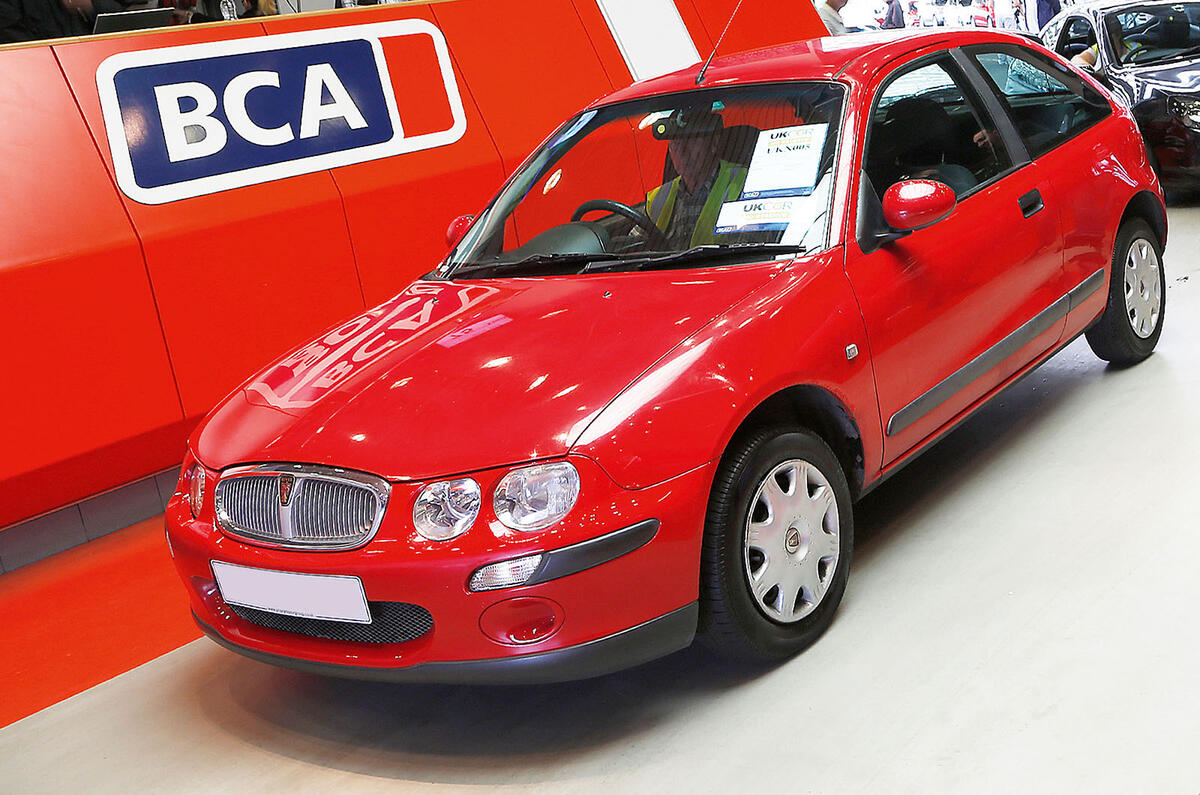
2001 Auto Trader magazine - The most brilliant magazine with used cars for sale in it, ever. Putting pictures in was the stroke of genius that made it come alive and left all other car ads looking dead in the water. The mag’s ‘bargain’ section had the sub-£1000 motors that typified Bangernomics.
2002 Free ads papers - Here you had a local paper without all the annoying news about mayors opening village fetes and appeals for lost dogs. What you paid for was a paper stuffed full of adverts for other people’s cast-offs, and cheap motors became a very significant part of that.
2003 Car dealers - Dealers who actually sold bangers were never a good source of marginal cars, mostly because if they were selling it for £250, the chances are that they’d bought it for a tenner.

2004 Telephone classifieds - There were companies who would call up the people who were advertising and offer to match the car up to their database of eager buyers. It was a scam, but sometimes you could find an oddity and a desperate seller.
2005 eBay - What could be simpler? See a car online, look at the pictures, read a description and then bid on it. If you have the highest bid, you win and pay. It isn’t the ideal way to buy, though, because you don’t actually get to kick the tyres.
2006 Facebook - In theory, you can sell anything on social media. Teenagers do all the time. Apparently you’re not supposed to make a habit of it, but there are commercial options. So buy a Nissan Micra from someone who just poked you, or something. Then ‘like’ it.

2007 Pistonheads - A website run by enthusiasts selling cars owned by enthusiasts. So if you’re looking for the more hardcore models that tend not to pop up on the mainstream motoring interweb, it is perfect. Plus they do sheds, so ideal for us, too.
2008 Car sales websites - There are just so many sites that offer cars for sale that it would unfair to single one out. What they all have in common are, usually, lots of pictures, which is a very good thing.

2009 Buy direct from car hire companies - As we all know, the best car is a rental, and several companies even offer you the chance to in effect test drive it for a few days. It will, of course, be an ex-rental, though.
2010 Freecycle - Here you go: a website for hippies giving stuff to each other they no longer want, and that includes cars. So you can get lucky and maybe there’s someone who is fed up with their Ford Fiesta and lives a few streets away… man.
2011 Gumtree - Having said we won’t highlight any specific websites, eBay’s localised little brother contains free private ads and seems to have lots of cheap bangers. It also seems to work quite well for buyers and sellers.
2012 Breakers’ yards - Buying a car from a scrappie isn’t ideal. I mean, they break up cars for living. They do sometimes sell a Category C write-off, which to might just have some cosmetic damage. So it’s still worth taking a look at what they have.

2013 Gift - It does happen. Someone - a friend or a relative - might give you a car. I’ve given a few away myself. Arguably the best way of getting into a car for free. But can you trust the donor or the car? If you can’t, smile politely and say, “Thanks, but no thanks.”
2014 Abandoned - If you’re prepared to do some research, you can acquire an abandoned vehicle for nowt. Easier before SORN because you could find a car on the street, make local enquiries then register with a V62. But it can still be done.
2015 Cardboard advert in the car’s window - This one is never, ever going to go away.

The five rules of Bangernomics
1. A year’s ticket - Make it a condition of purchase that you’ll only buy your banger if it passes the MOT. A roadworthy car means a happy buyer - for 12 months, at least.
2. Tyres maketh the motor - Remoulds, part-worns or a mix of makes and treads all spell serial neglect. Avoid.
3. Keep it in the family - A line of related owners is always good, backed up by random bills and stamps. Standard.
4. Broaden your buying mind - Everything is up for grabs. If there’s an opportunity to buy a Bangernomic tractor, do it.
5. There are no rules - Break, bend and ignore them, and simply go with your gut feeling. If it’s within your budget and you like it, buy it.
The next 25 year of Bangernomics
25 years from now I think there’s going to be a lot more bodging in the future. Here’s how I reckon I’ll be reporting on Bangernomics in 2040.
Hydrogen power - The internal combustion engine is still with us, but the clever thing is that they can now run on hydrogen. We knew that already, but the conversion kits and tanks became cheap and gave a new lease of life to many big petrol barges, such as Jaguar XJs, BMW 7 Series and Audi A8s, which could make use of the extensive hydrogen infrastructure.

Hybrids - Provided they are made by Japanese car companies, they are quite likely to still be working. A Lexus NX300h, for instance, may not be driven by the long-retired Will.i.am any more, but that means everyone can have one now.

Batteries - These didn’t work out too well. There were limits to how long battery packs would last. Retro-fitting fuel cells into Teslas sort of worked; Nissan Leafs were just thrown away like expired AAAs.
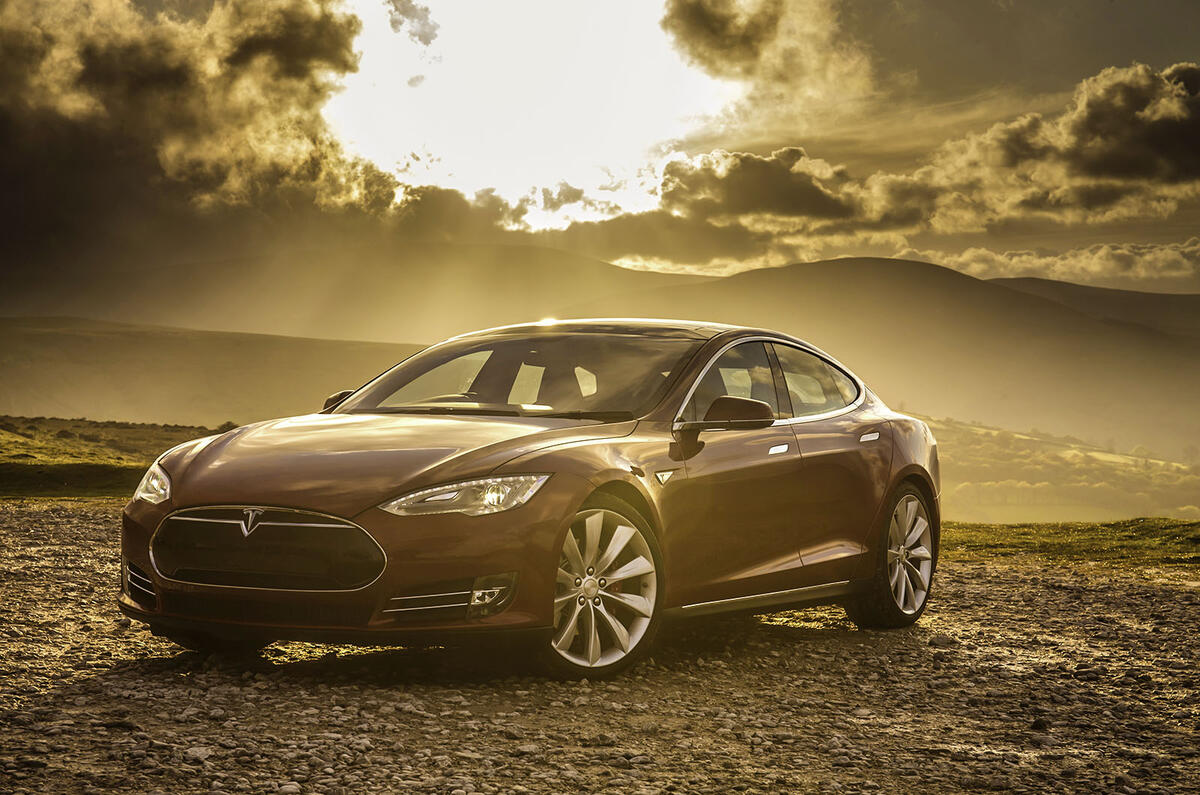
Autonomous cars - Bangernomics is all about being hands-on. The ridiculous Google Cars has become disposably dirt cheap and can be reprogrammed for manual driving, while Apple’s overpriced iCar has stayed premium-priced and fashionable, provided you buy the upgrades. Bangernomics hackers mean a half-decent operating system is just a dodgy download away.
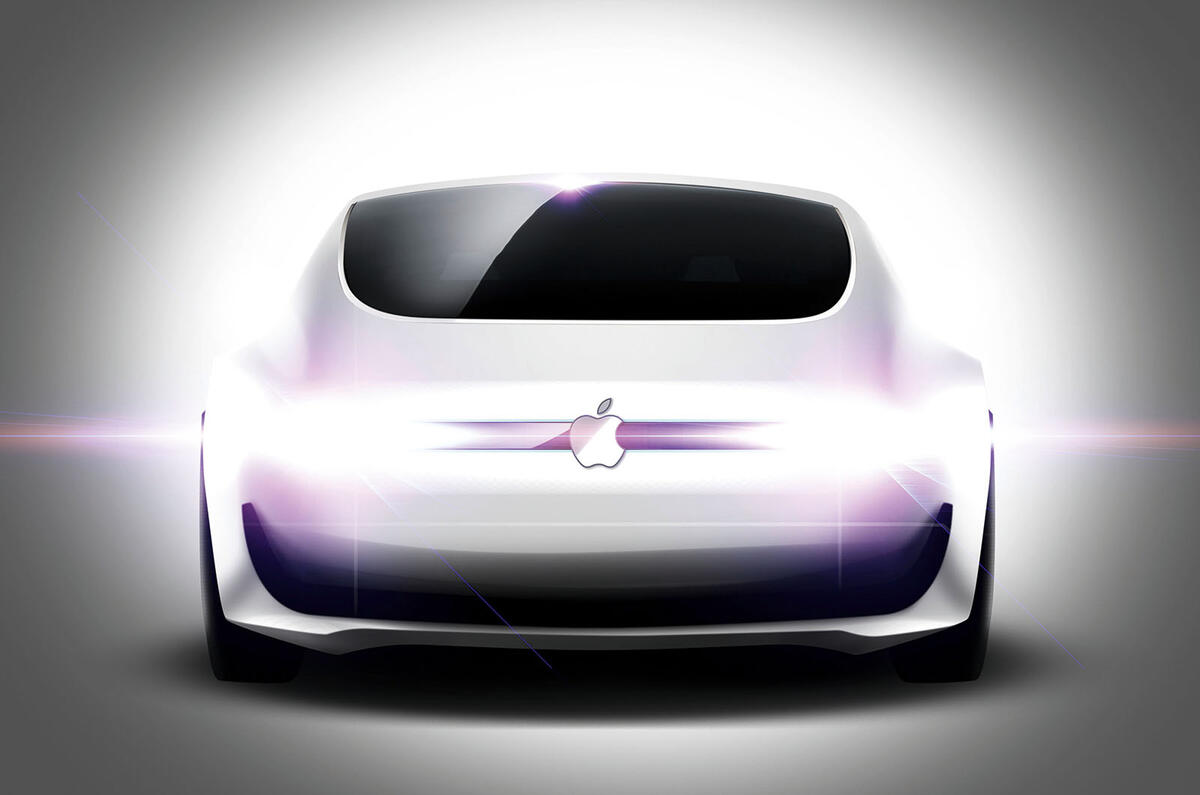
Dinosaurs - The utterly unremarkable survivors of the 2010s are the new Bangernomics normal. The failed attempt by Hyundai to make the Genesis a premium brand means you can buy a lot of utterly reliable car for little money. Not posh enough? There are always those Infinitis, which come in hybrid and fuel cell flavours.
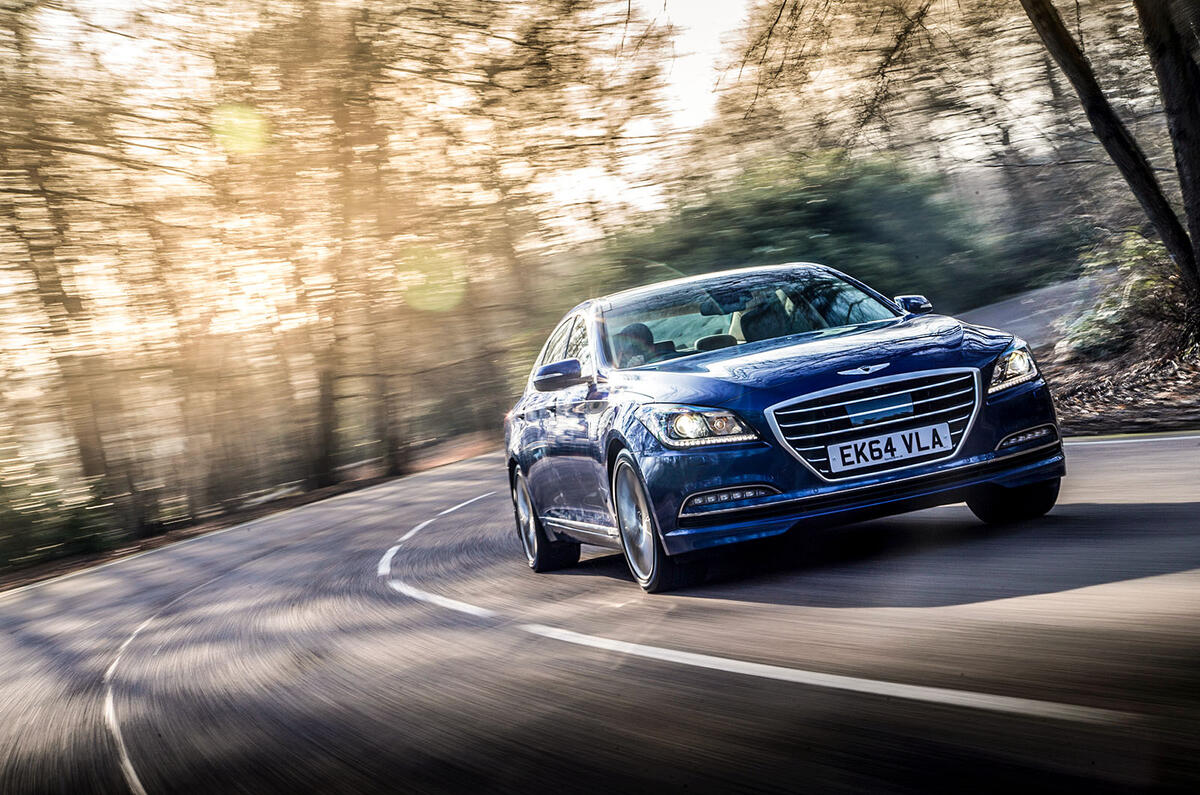

































































Join the debate
Add your comment
The future of banging
@ macaroni
Not sure that's true...
I was given a 306xsi once, because it had failed an MOT test and the garage had quoted over £400 to fix it.
I traced the fault to a split pipe to the MAP sensor, fixed it for free, sailed through the MOT, sold it for £800.
Even more modern cars with sensors and electronics benefit from good old-fashioned fault finding.